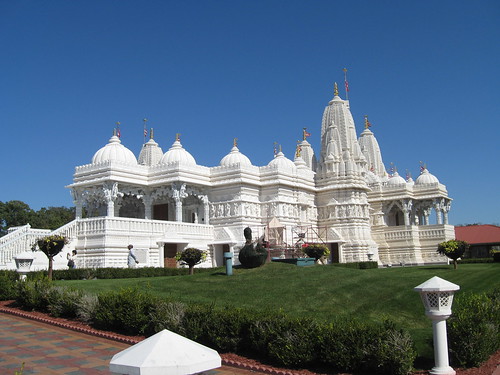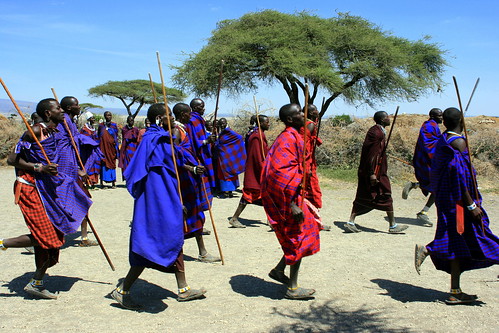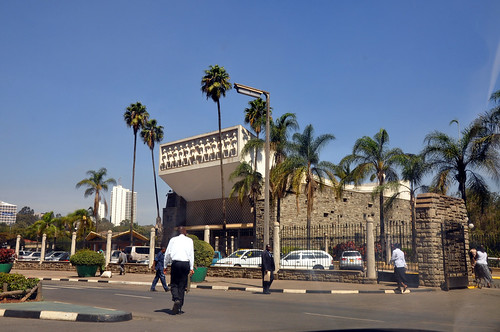Nairobi is the capital of our destination in Kenya. Its origin in 1899 was that of a railway camp has since grown rapidly and has become the economic, trade and transport in East Africa. The perfect place for shopping trip. Its name derives from Ewaso Nyarobi, in Masai means «Place of cold water».

Photography by rosemarydukelow
The highlight of the city is the National Museum, which offers an overview of the culture and natural history of the country very interesting. Some of his models are fantastic. The national archive in the old Bank of India, a building steeped in history. The Railway Museum, the backbone of Kenya’s history. Emerging from the film itself, the Museum of Karen Blixen, author of «Out of Africa». A touch of color, the Nairobi Arboretum, 350 species of trees in 32 acres full of trails for strolling, and the city park, which has 121 acres of gardens, ponds, a canal and a nursery. It even has some sections of indigenous forest, is a popular area to walk to and eat outdoors. Another option is the Uhuru Gardens, where the Uhuru Monument dedicated to the struggle for independence.

Photography by neilward
Let’s not forget to mention the Bomas of Kenya, an exhibition created to preserve the traditional culture with recreations of villages bomas (houses), shows, dances and performances. It is a quick way to deepen the country’s culture. Finally, the David Sheldrick Wildlife Trust, an elephant orphanage, the AFEW Giraffe Centre where you can touch the giraffes and the Nairobi National Park, where you can make an approximation to what will be a real safari.
South beach Mombasa:
It is the second city in importance. The climate is harsh, oppressive heat and makes a sticky that can only be alleviated with a swim in the clear, of course, warm Indian Ocean waters, which whipped sand beaches to stroll if you get rid of the myriad of native try to sell absolutely anything.
The south coast of Kenya offers dozens of beach resorts, especially in Diani, where the beaches are especially beautiful and well known for practicing marine and underwater activities.
As far as Mombasa, a city historically and fundamentally this is due largely to the Portuguese. The main port occupies a small offshore island connected to the mainland to the north and west by a bridge and the south by the Likoni ferry. Fuck it is a mission of patience, but then is very simple, fast and comfortable.
The most interesting places to visit are Shri Swaminarayan Temple, one of the oldest Hindu temples and impressive of East Africa. Is very close to the train station and from afar, looks like a big birthday cake. The Uhuru Gardens and the Giant Tusks, the symbol of the city are four giant elephant tusks, built to celebrate the coronation of Elizabeth II in 1953 and looks like a door of welcome to Mombasa. Of course, the market and the street MacKinnon Biashara are not tourist, but well worth a visit to soak up a little life in that city.

Photography by moonrat42
Another temple, Jain temple oldest jaimista outside India. There are churches like the Anglican Cathedral, the oldest of Mombasa and could be mistaken for a mosque by the height of its dome, porches with arches and some other Arab ornaments. The old court, one of the most attractive colonial buildings of the city, restored, houses the museum of Swahili culture and local history and is very close to Treasury Square, the square of the treasure, surrounded by colonial buildings such as the Old Town Hall and several international banks. All this within walking distance of Fort Jesus, the strategically most important building of the Swahili coast. And the old town, where we will find: the former police station, the Mombasa Club, mosques Mandhry, the Bohr and Basheikh, the old post office, Governor’s Square, staircase Leven Steps, Faro Blanco and NDIA Kuu Road, originally known as Main Road.
The Masai:
The Masai do not usually eat meat, for them the animals are more valuable alive than dead. Eat meat only on special occasions. To draw on the necessary proteins, make indentations controlled cattle. That blood mixed with milk and let it ferment a few days in a pumpkin. That is the basis of their diet, as they rarely eat fish or vegetables either.

Photography by Abeeeer
The family wealth is defined by the number of children and livestock. Have much of a little group and the other is considered poverty. It’s like having nothing. They dress in a red robe, called shuka, his hair tinged with ocher and cut it like a Roman helmet also sectioned the earlobes. They are adorned with necklaces of colored beads. It is a symbol of beauty. At age 15, is the ceremony that makes young people in Ilmor, warriors and then collect the baton from the elders, seniors (30 to 35 years) become old and young and can marry and form their own family .
Live in family groups called manyatta. They are arranged around a circular fold of cattle. In each one can live dozens of people, it is a polygamous society and a man can have as many wives as he can maintain.
Useful Information:
When to go: between July and November. Not only to avoid the rainy season, but also because it may assist the migration of the Serengeti-Mara wildebeest.
How to dress: clothing spacious, light and natural fiber, raw, neutral color, not to attract mosquitoes or frighten the animals with bright colors. Depending on the time it can be cold, so the technique of onion (wearing several layers) is recommended.
Hiring an appropriate means of transport because the communication infrastructures in the country are frankly appalling. It is better to have someone experienced in charge of transport.Keep in mind that the parks charge between 10 and 50 € per person per day. Sometimes you also have to pay for the car apart.
Most animals can only be seen (and photographed) from the car, which is fine also carry binoculars. Should also bring sunscreen, a hat, sunglasses and a knife. The health system should be vaccinated, at least against yellow fever and take medication to prevent malaria. But it is consumer taste.
When shopping, always put the natives at abnormally high prices, in order to get to haggle with the buyer, is a sport. Still haggling always ask very high prices. It is essential to be clear how much is one willing to pay for the item and not give one iota.
Shopping: African crafts (in Kenya are no masks, imported from other countries), wooden figures of Kamba, Kisii stone carvings, beads of all types, fabrics and batics.
Tips: They are completely voluntary, but are widespread throughout the country and all they expect a tip even when only one direction you have indicated.
How to go:
To arrive in Nairobi must be done through the Jomo Kenyatta International Airport, 16 km. southeast of the city. There are no direct flights from all European cities, so the best option is to scale. For example, since Brussels is 8 hours by plane. Once in Nairobi, KBS 34 bus connects the airport to the center of the city. Also remember that the visa is priced at 20 euros.

Photography by Jorge Lascar
Bon voyage!
Leave a Reply
You must be logged in to post a comment.
Recent Comments